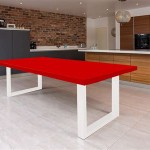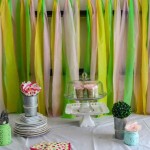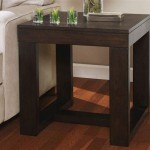Maximizing Space and Style: Glass Coffee Tables for Small Living Rooms
In the realm of interior design, the challenge of furnishing a small living room often involves striking a balance between functionality and aesthetics. A coffee table, a staple piece in most living rooms, can easily become a spatial obstacle in a compact environment. Opting for a glass coffee table presents a strategic solution, offering a multitude of benefits that contribute to both visual appeal and practical usability in limited spaces.
The inherent transparency of glass allows light to permeate the room, creating an illusion of greater space and openness. Unlike solid wood or opaque coffee tables, glass models minimize visual clutter, allowing the eye to travel freely through the room. Furthermore, the sleek and modern aesthetic of glass complements a wide range of décor styles, from minimalist and contemporary to transitional and even certain traditional settings. This adaptability makes a glass coffee table a versatile choice for homeowners seeking to optimize their small living room without compromising on style.
The selection of a glass coffee table for a small living room requires careful consideration of size, shape, style, and functionality. Choosing the right table can significantly enhance the overall ambiance of the space and improve its usability. Neglecting these factors can lead to a purchase that feels out of place or contributes to the feeling of crampedness that one is trying to avoid.
Key Point 1: Enhancing Visual Space and Light
One of the primary advantages of choosing a glass coffee table for a small living room is its ability to enhance the visual perception of space. Solid, opaque furniture pieces often create a sense of bulkiness which can make a small room feel even smaller. Glass, on the other hand, is virtually invisible, allowing the flooring and surrounding design elements to remain visible. This unbroken visual flow leads to a more open and airy atmosphere.
The refractive properties of glass also contribute to its space-enhancing capabilities. Glass reflects natural and artificial light, bouncing it around the room and brightening darker corners. This increased luminosity makes the room feel larger and more inviting. Consider the placement of the glass coffee table relative to windows and light sources to maximize this effect. A strategically positioned glass table can significantly improve the overall brightness and spaciousness of a small living room.
Furthermore, the thin profiles of many glass coffee tables contribute to a sense of lightness. Unlike chunky wooden tables with thick legs, glass tables often feature sleek metal frames or minimalist designs that further minimize visual obstruction. This combination of transparency and slim design creates a sophisticated and unobtrusive focal point in the living room.
The choice of glass can also impact the perceived space. Clear glass offers maximum transparency, while tinted or frosted glass can provide a subtle level of privacy or visual interest without sacrificing the overall space-enhancing benefits. The decision ultimately depends on the desired aesthetic and the level of visibility one wishes to achieve.
Key Point 2: Maximizing Functionality in a Limited Area
Beyond aesthetics, a well-chosen glass coffee table can also offer practical functionality in a small living room. While prioritizing space is crucial, the coffee table still needs to serve its primary purpose: providing a surface for drinks, books, remote controls, and other essential items. Several design features can help maximize functionality without compromising on space.
Coffee tables with built-in storage are particularly useful in small living rooms. These models often feature shelves or drawers underneath the glass top, providing discreet storage for magazines, blankets, or other items that might clutter the living space. Clear organization minimizes visual clutter and keeps the living room looking tidy and organized. Some designs incorporate hidden compartments or lift-top mechanisms, offering even more storage options without sacrificing the clean lines of the glass top.
The shape of the coffee table also plays a significant role in functionality. Round or oval coffee tables are often preferable in small living rooms as they allow for easier movement around the furniture and prevent sharp corners from obstructing walkways. Rectangular coffee tables can also work well, particularly if they are narrow and positioned strategically in the center of the seating area. Avoid overly large or bulky coffee tables that can create bottlenecks and make it difficult to navigate the room.
Consider the height of the coffee table in relation to the seating area. A coffee table that is too high or too low can be uncomfortable to use. Ideally, the coffee table should be approximately the same height as the sofa cushions or slightly lower. This ensures that it is easily accessible for placing drinks or reaching for items without requiring excessive bending or stretching.
Durability is another important factor to consider, especially in homes with children or pets. Tempered glass is a strong and safe option that can withstand daily use and resist shattering. Look for coffee tables with sturdy frames and well-constructed joints to ensure longevity and stability.
Key Point 3: Style Considerations and Design Integration
Selecting a glass coffee table that complements the existing décor is essential for creating a cohesive and visually appealing living room. Glass coffee tables come in a wide variety of styles, from minimalist and contemporary to industrial and traditional, allowing homeowners to find a model that seamlessly integrates with their existing furniture and accessories.
For modern or minimalist living rooms, look for glass coffee tables with clean lines, simple metal frames, and a clear glass top. These models often feature a sleek and understated design that blends effortlessly with other contemporary furniture pieces. Consider opting for a coffee table with a geometric shape or a unique base design to add a touch of personality to the room.
In transitional living rooms that blend traditional and contemporary elements, a glass coffee table with a wooden frame or ornate metal detailing can provide a subtle nod to classic design while maintaining a modern feel. Look for coffee tables with curved legs or decorative accents that add a touch of elegance to the space. The combination of glass and wood can create a warm and inviting atmosphere.
For industrial-inspired living rooms, a glass coffee table with a metal frame and exposed hardware can complement the raw and edgy aesthetic. Consider a coffee table with a reclaimed wood base or a distressed metal finish to add a touch of character to the space. The juxtaposition of glass and industrial materials can create a visually striking focal point.
The choice of glass color and finish can also impact the overall style of the living room. Clear glass offers a clean and modern look, while tinted or frosted glass can add a touch of sophistication or privacy. Smoked glass can create a dramatic effect, while textured glass can add visual interest and depth. Ultimately, the best choice depends on the desired aesthetic and the overall color palette of the room.
Accessories can be strategically placed on or around the glass coffee table to enhance its visual appeal and complement the existing décor. Consider using decorative trays, candles, books, or small plants to add pops of color and texture to the space. Avoid cluttering the coffee table with too many items, as this can detract from its clean lines and transparency.
The surrounding furniture and accessories should also be considered when selecting a glass coffee table. Ensure that the coffee table is appropriately sized and positioned in relation to the sofa, chairs, and other furniture pieces. The coffee table should be easily accessible from all seating areas and should not obstruct walkways or create a feeling of crampedness. A well-coordinated living room will create a sense of harmony and balance, making the space feel more inviting and comfortable.
In conclusion, selecting the appropriate glass coffee table for a small living room is a multifaceted process that requires careful attention to design principles and practical considerations. By prioritizing space optimization, functionality, and stylistic integration, it is possible to choose a glass coffee table that enhances the beauty and usability of the living room.

51 Glass Coffee Tables That Every Living Room Craves

Top 10 Contemporary Glass Coffee Tables For Small Spaces Colourful Beautiful Things

Style Your Small Living Room With A Glass Top Coffee Table Homelane Blog

51 Glass Coffee Tables That Every Living Room Craves

Cup Half Full Splurge Or Save Glass Coffee Tables Table Decorating

10 Times A Glass Coffee Table Made Room Houzz Ie

Is A Coffee Table Essential For Living Room Design Furniturebox

The Ultimate List Of Glass Coffee Tables For Your Dream Living Room Farmhousehub

Miami Modern Rectangular Clear Glass Coffee Table With Square Silver Chrome Metal Legs For Minimalist Living Room Diy At B Q

Bestier 42 Inch Glass Coffee Table With Led Light Storage For Living Room White Marble Com








